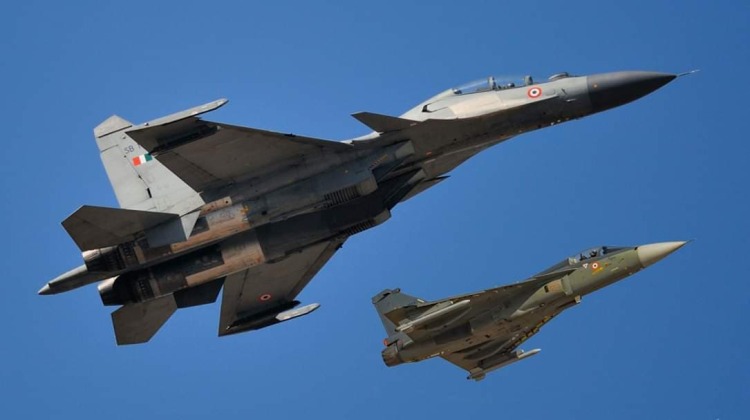Indian aerospace company Hindustan Aeronautics Limited (HAL) announced that in the second week of March construction of the first prototype fifth generation fighter under the Advanced Medium Combat Aircraft (AMCA) program began. The aircraft is expected to be a medium weight twin engine design focused primarily on air to ground missions but also capable in air to air combat. It will be built around a radar cross section reducing stealth airframe. The fighter will use fourth generation engines, namely the American F414, providing less thrust than the Su-30 fighters already in Indian service and ensuring that the fighter will be unable to supercruise or to match the flight performances of other fighters of its generation. India’s ability to develop a fifth generation fighter has repeatedly been brought to serious question, with the country’s attempt to develop a lightweight fourth generation fighter taking over 40 years. The end product of this prior program, the Tejas fighter, relied on foreign armaments, avionics and sensors and an American engine, seriously undermining the claim that the aircraft was indigenous with complex Indian inputs remaining in very limited. Former financial advisor to the Indian finance ministry Amit Cowshish was one of many to predict on the basis of the precedent set by the Tejas: “As for AMCA, it certainly seems to be back [on the agenda], but AMCA will take much longer to develop than is being currently projected.” Only two countries currently field indigenously developed fifth generation fighters at squadron level strength – namely China and the United States – with Russia expected to field its first full strength fifth generation squadron around 2024. The AMCA is not expected to make its first flight before 2027.

The scale of research and development in India and the degree of sophistication of its industrial base are likely to make timely development of a fifth generation fighter extremely difficult even with very considerable technology transfers. Russia and Israel are expected to primary sources of technology inputs. India notably previously participated in the FGFA joint fifth generation find a program with Russia, although after joining the program late and being unable to make significant technological contributions it was required to pay very considerable sums for the sharing of Russian technologies, resulting in the country withdrawing from the program. With Russia having completed the program alone as the Su-57, which entered service in December 2020 but is only expected to be fielded in a frontline role in the latter half of the decade, Indian officials have consistently shown a strong interest in either acquiring the fighter from Russia or assembling them under license domestically as it did with the ‘4+ generation’ Su-30MKI. The Su-57 is a heavier fighter with a significantly higher thrust/weight ratio and endurance than the AMCA jet, with its Saturn 30 engines expected to provide over double the thrust of the F414 while its price, due to a larger scale of production, may well be lower. It is expected that the two will be complimentary, much as the Tejas and Su-30MKI were in the preceding generation.
